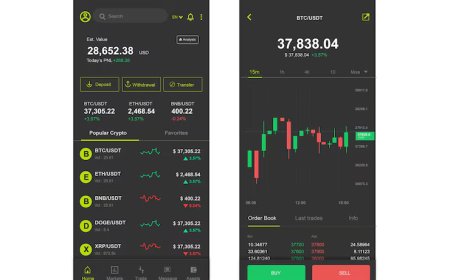Top KPIs Every Practice Should Track in Their Billing Reports
Learn which key performance indicators (KPIs) are essential in medical billing. Track the right metrics to improve collections, reduce denials, and boost financial health.

Top KPIs Every Practice Should Track in Their Billing Reports
In todays complex healthcare landscape, practices cant afford to guess when it comes to financial performance. Billing reports hold the key to better collections, cleaner claims, and faster paymentsbut only if youre tracking the right KPIs (Key Performance Indicators).
At Medical Biller, the only platform built to compare the Top medical billing companies in California and nationwide, we see high-performing practices use KPIs as part of their regular billing strategy. This guide walks you through the most important medical billing KPIs to monitorwhether youre billing in-house or working with an outsourced partner.
Why KPIs Matter in Medical Billing
Key performance indicators are measurable values that show how effectively your billing operation is performing. By tracking KPIs, you can:
-
Spot issues before they grow
-
Improve reimbursement rates
-
Benchmark performance over time
-
Make smarter business decisions
-
Hold billing teams accountable
Without KPIs, revenue leaks go unnoticed, and your practice runs blind.
1. Days in Accounts Receivable (A/R)
What It Measures:
The average number of days it takes to collect payment after a service is provided.
Formula:
(Total A/R Average Daily Charges)
Benchmark:
Aim for < 35 days. Over 50 is a red flag.
Why It Matters:
The longer money sits in A/R, the more likely it is to be lost. This metric reflects overall efficiency in collections and payer responsiveness.
2. First Pass Resolution Rate (FPRR)
What It Measures:
The percentage of claims paid on the first submissionwithout corrections or appeals.
Benchmark:
> 90% is considered excellent.
Why It Matters:
A high FPRR means fewer denials and faster cash flow. Its a direct reflection of your clean claim rate and billing accuracy.
3. Claim Denial Rate
What It Measures:
The percentage of claims that are denied by payers after submission.
Benchmark:
< 510% is ideal.
Why It Matters:
High denial rates indicate coding, documentation, or eligibility issues. Monitoring this KPI helps you identify patterns and reduce rework.
4. Net Collection Rate
What It Measures:
The percentage of allowable revenue you actually collect (excluding bad debt and contractual adjustments).
Benchmark:
> 95% is strong.
Why It Matters:
This KPI shows how much of what you're entitled to collect is actually reaching your bank account.
5. Gross Collection Rate
What It Measures:
Total payments received divided by total charges billed.
Benchmark:
This varies by specialty but should be closely monitored alongside adjustments.
Why It Matters:
Although this includes contractual adjustments, it reflects billing and payer mix trends over time.
6. A/R Over 90 Days
What It Measures:
The percentage of total A/R that is older than 90 days.
Benchmark:
< 1520% is acceptable. Anything higher may mean claims are not being followed up.
Why It Matters:
Older A/R is harder to collect. This KPI reflects the effectiveness of your follow-up and denial management process.
7. Patient Collection Rate
What It Measures:
The percentage of patient-responsible balances (copays, deductibles, coinsurance) that are collected.
Why It Matters:
With rising patient cost responsibility, this KPI shows how well your front desk and billing team are handling patient billing and communications.
8. Charge Lag Days
What It Measures:
The average number of days between the date of service and when the claim is submitted.
Benchmark:
< 35 days is optimal.
Why It Matters:
Delays in charge entry delay revenue. A long charge lag can also push you past timely filing limits with payers.
9. Denial Reversal Rate
What It Measures:
How many denied claims are successfully appealed and paid.
Why It Matters:
A high reversal rate shows that your team is not giving up on appeals and knows how to fight denials effectively.
10. Top Denial Reasons
What It Measures:
The most common causes of claim denials across your payer mix.
Why It Matters:
This KPI doesnt show a rateit shows patterns. Knowing your top denial reasons helps you prevent future errors, whether in coding, documentation, or authorization.
How to Track These KPIs
Whether you use in-house billing software or a third-party billing partner, make sure you have:
-
Regular monthly billing reports
-
Dashboards or scorecards
-
Trend comparison over time
-
Breakdown by payer, provider, and CPT code
-
Clear definitions of how each KPI is calculated
If your current billing company doesnt provide this visibility, it may be time to explore other options on Medical Biller.
Understanding ERA and EFT in Medical Billing: A Complete Guide
Final Thoughts
KPIs are more than just numberstheyre decision-making tools that reveal the financial health of your practice. The more closely you monitor them, the more agile and profitable your billing operation becomes.
Use this list to evaluate your current reporting process. Then, if needed, find a billing partner on Medical Biller who delivers detailed, transparent, and actionable billing insights. Thats how top practices in the Top medical billing companies in California and across the country stay ahead.











































